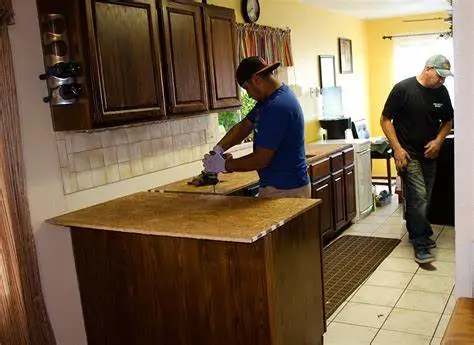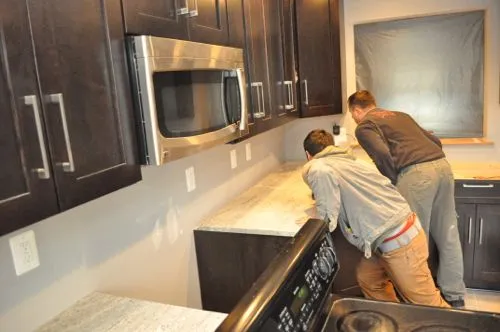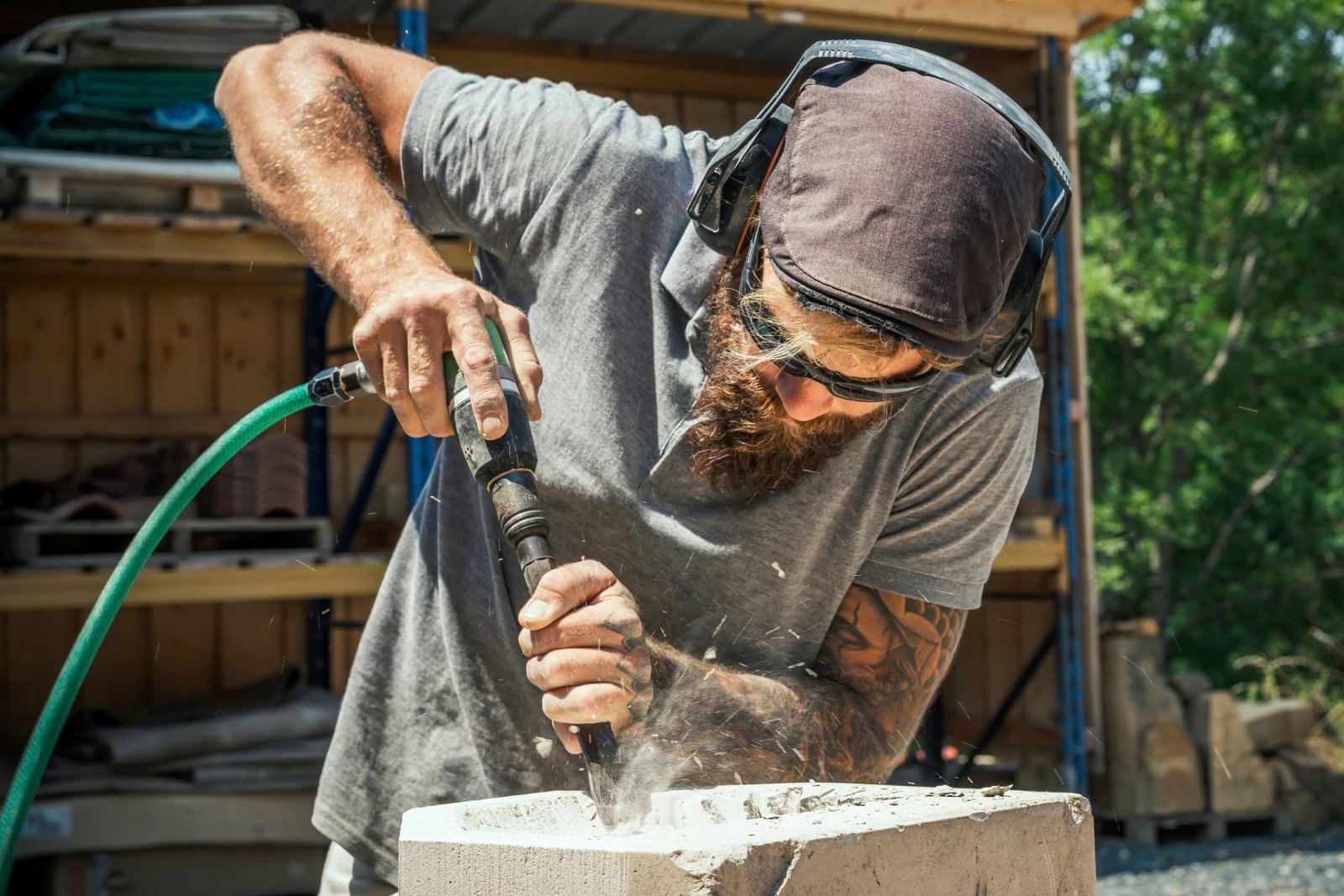
Granite countertops are a top-tier choice for kitchens and bathrooms, offering natural beauty, high durability, and excellent resale value
Granite countertops are a top-tier choice for kitchens and bathrooms, offering natural beauty, high durability, and excellent resale value. But what’s often overlooked in their installation is the step where the granite slab is physically attached to the cabinet base. This crucial phase ensures long-term performance and structural stability. Whether you’re working with a contractor or doing a DIY upgrade, learning how to attach granite countertops to cabinets correctly is essential for safety and longevity.
In this guide, we’ll walk you through the exact steps of securing granite slabs to cabinets, including material selection, preparation, adhesives, support systems, and expert installation tips.

What Is a Granite Countertop?
Before diving into the install process, it helps to understand the material. A granite countertop is a slab of natural stone, cut and polished to fit the dimensions of your kitchen countertop or bathroom vanity. Granite is dense and heavy—often weighing between 15 to 20 pounds per square foot. That means the countertop requires solid support and precise installation techniques to stay secure.
👉 What Is a Granite Countertop?

Why Proper Attachment Matters
Improperly attached granite countertops can lead to:
- Cracks or breakage due to stress on unsupported areas
- Shifting slabs that affect seam alignment
- Water leakage in kitchen and bathroom areas
- Costly granite countertop repair work
A proper installation maintains the aesthetic and structural integrity of your granite countertop design, preserving its value and usability for decades.
Tools and Materials Needed
To securely attach your granite countertop to cabinets, you’ll need the following:
Materials:
- Silicone or construction adhesive (granite-safe)
- Epoxy for seam joining (if needed)
- Shims (wood or plastic)
- Hidden or visible support brackets (for overhangs)
Tools:
- Level
- Caulk gun
- Clamps (optional)
- Masking tape
- Putty knife or scraper
- Cleaning cloths
Step-by-Step: How to Attach Granite Countertops to Cabinets
Step 1: Prepare the Cabinets
Before you place the granite slab, ensure the cabinet base is ready:
- Check for level surfaces. Use a 4- to 6-foot level across the entire run of cabinetry.
- Add shims where necessary to ensure the surface is even.
- Verify that all cabinets are securely anchored to the wall.
👉 How to Install Hidden Brackets for Granite Countertops?
If your design includes an overhang, now is the time to install support brackets or corbels.
Step 2: Test Fit the Granite Slab
Before applying any adhesive:
- Dry-fit the granite slab on the cabinets.
- Check for overhang uniformity, cutout alignments (sink, cooktop), and wall clearances.
- Make adjustments as needed.
👉 How to Transport Granite Countertops Without Breaking
Use this guide when moving the slab to the install site.
Step 3: Clean Surfaces
Both the cabinet tops and underside of the granite should be free of:
- Dust
- Debris
- Moisture
- Oil or grease
Use a clean rag with alcohol or stone-safe cleaner to wipe surfaces.
Step 4: Apply Adhesive
Use a silicone-based adhesive—it’s strong enough to hold granite in place without damaging it.
- Apply quarter-size dabs of silicone every 6–12 inches along the perimeter of the cabinet top.
- Place additional dabs in the center support areas or cross-braces.
Important: Don’t use excessive adhesive, as it can interfere with leveling or future removal.
Step 5: Place the Granite Slab
Carefully lower the granite onto the cabinet top. Use suction cup lifters or team lifting to avoid stress on the slab.
- Align all edges, seams, and cutouts.
- Apply gentle pressure to seat the slab into the adhesive.
Check with a level again and use shims to make micro-adjustments.
Step 6: Secure Seams (If Needed)
If your kitchen countertop or island consists of multiple slabs:
- Use epoxy seam kits color-matched to your granite.
- Tape the edges, apply epoxy, and use seam setter clamps to pull the slabs together.
- Clean excess epoxy quickly and allow to cure per manufacturer’s instructions.
Step 7: Final Caulking and Inspection
- Apply a bead of clear or color-matched caulk where the granite meets the wall or backsplash.
- Inspect for level, gaps, and stability.
- Let adhesive cure for 24 hours before adding heavy items or using the sink.
Bonus: Attaching Granite Countertops with Hidden Brackets
If you’re installing a floating bar or island:
- Hidden brackets should be installed on wall studs or cabinet frames before granite placement.
- The slab should rest directly on the brackets with a small dab of adhesive.
- Add edge protection to prevent chipping during use.
👉 How to Install Hidden Brackets for Granite Countertops?
Granite Countertop Maintenance After Installation
Proper attachment is only half the job—after installation, follow these granite countertop maintenance tips:
- Use stone-safe cleaners only
- Reseal every 12–18 months (depending on porosity)
- Avoid placing hot pans directly on the surface
- Wipe spills promptly to prevent staining
Well-maintained countertops last longer and retain their original granite countertop colors and shine.
How Much Does Professional Installation Cost?
If you’re not doing it yourself, professional installation typically costs:
| Service | Average Price (USD) |
|---|---|
| Granite countertop install | $35–$75 per sq. ft. |
| Cabinet leveling | $100–$250 |
| Hidden bracket installation | $25–$40 per bracket |
The cost is minor compared to the value a well-installed granite countertop adds to your home.
Final Thoughts
Attaching a granite countertop to cabinets may seem like a finishing touch, but it’s one of the most critical steps in the overall countertop installation process. Done right, it ensures durability, safety, and visual appeal. Whether you’re installing a classic Uba Tuba, white pearl, or a bold granite countertop color, proper attachment to cabinets is key.
Use high-quality adhesive, support where needed, and always level before setting your slab. These steps can save you from future granite countertop repair work and help maintain your investment for years.

